WordPress File Manager Plugin (CMDM) - Use Case - Creating Library of Content From Scratch
Use Case - Creating Content Library From Scratch
Note: This guide covers features from the Pro version of WordPress File Manager Plugin - This document uses version 4.3.0
Video Use-Case
Introduction
The WordPress File Manager Plugin creates a directory of files and provides a download security. Users can download and upload files, all moderated by the admin.
Use Case Front-End
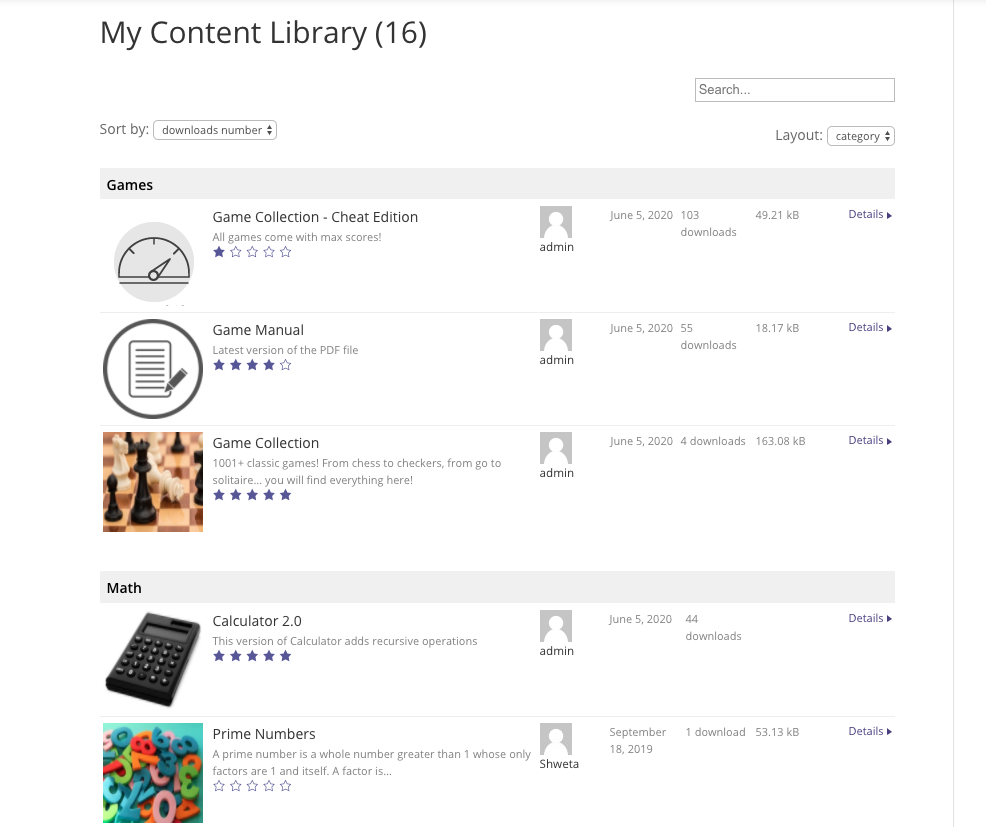
Use Case Assumptions
In this example use case guide, we'll cover how to create a download directory and configure your file management system from bottom up. It will include audio and video preview, password-protected downloads and more.
We consider that you have already bought the plugin, but not installed it.
It follows:
- Installation of the plugin
- Adding first download
- Choosing allowed file types
- Admin - Adding directory content to the site
- Shortcodes
- Widgets
- Enabling notifications for new downloads
- Translating the interface
- Improving SEO
- Extra - Adding a disclaimer
Installing the Plugin
The process is the same for all CM plugins.

- Download the plugin from your customer dashboard.
- Log in to WordPress and navigate to the WordPress Admin → Plugins settings.
- Click on Add New.
- Activate it and add the license.
TIP: Technical Check
After downloading and installing the plugin on your WordPress site, on the WordPress Dashboard navigate to CM Downloads → User Guide. Scroll down to System Information.
It should display
- PHP version greater than 5.4.
- PHP cURL is On
- PHP upload size greater than 1M
Adding First Download
There is no downloads directory without downloads!
Downloads Dashboard
Every user has a dashboard. It starts empty, but we'll populate it now.

The link is located at the top of the settings screen.
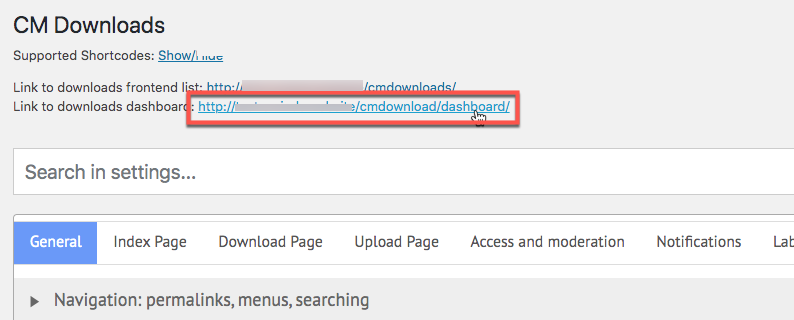
From your downloads dashboard, you can add your first download by clicking the Add New button.

Fill in all needed information and upload one or more files. This includes name and description:
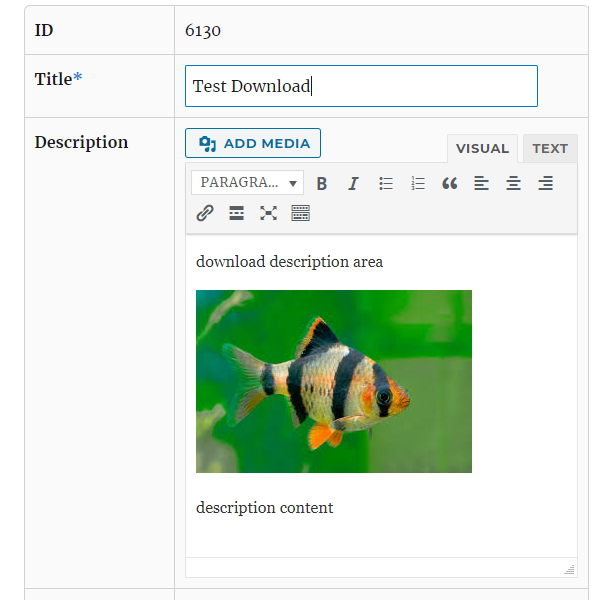
It also includes category, download type, actual files, category, tags, notes, screenshots, thumbnail, and other fields.
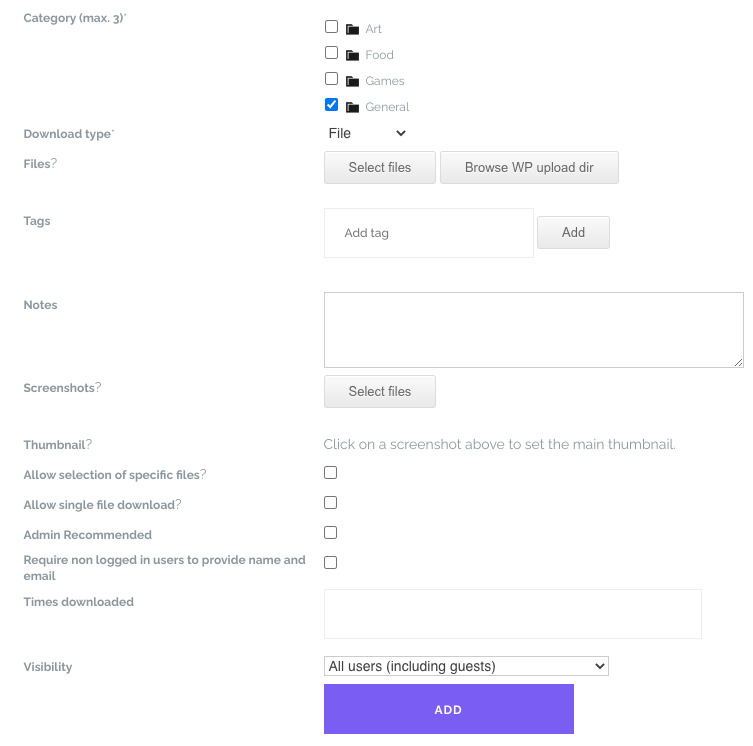
TIP: Modifying the Upload Form
You can edit the upload page from Settings → Upload Page tab.

Some of the aspects you can change.
- Features: Require description, make categories obligatory, add agreement text and more. Learn more: WordPress File Manager Plugin (CMDM) - Users - Adding a Download - CreativeMinds Products Documentation
- Visual: Change template, modify category bar look, reorder fields and more. Learn more: WordPress File Manager Plugin (CMDM) - Theme - Upload Page Customization - CreativeMinds Products Documentation
We'll cover some of the features still in this article.
After you finish entering all of the information in the appropriate fields of the New Download form and you save the download, you will receive a notification of the successful upload.
Click on the View link to see how your file will appear in the download and file manager!
Congratulations!
You have uploaded your first file!

Choosing the Allowed File Types
Next, define which file types are permitted in the Upload Page tab. Users will only be able to upload these file types. You should separate them by commas.

Example:
zip, doc, docx, pdf, jpg, png
Adding Directory Content to The Site
You can use more than the default index page. Let's learn how to configure the index and add widgets.
1) Shortcodes
Shortcodes have attributes that allow them to restrict their content.
Index
Show the index page on other parts of the site.
- Index page -
[cmdm-index]
Example with additional attributes
[cmdm-index tag="pdf,avi,jpg" view="tiles" author="0" sort="newest" limit="10"]
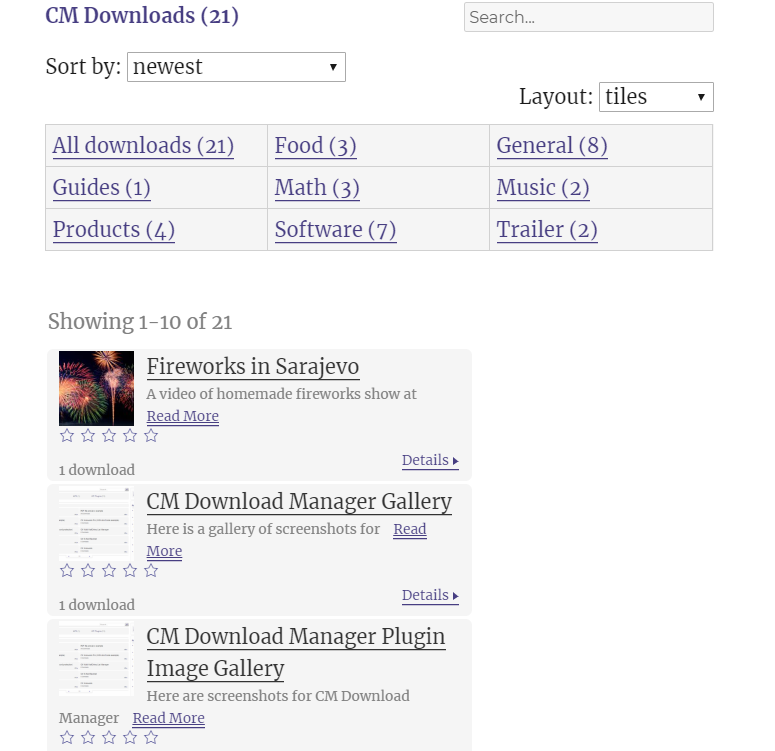
Lists
- Files list -
[cmdm-files-list] - Downloads List -
[CMDM-list] - Link to the download list page with predefined filters -
[cmdm-files-list-link]
Forms
- Upload form -
[cmdm-upload-form] - Login form as seen in the CMDM Login Form widget -
[cmdm-login-form]
User Elements
- User's download log -
[cmdm-my-logs limit=5] - My downloads -
[cmdm-my-downloads] - Downloads history log -
[cmdm-my-download-history]
2) Adding Sidebar widgets
The plugin includes a series of sidebar widgets. You can add them via Admin Dashboard → Appearance → Widgets.
Example of the Top Downloads widget:
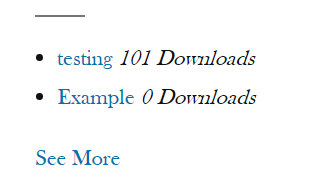
Complete list:
- Top Downloads Widget, Tags Widget, Related Downloads Widget, Login Widget, Downloads List Widget, Download Details Widget, Download Button Widget, Dashboard Links Widget, Frequent Contributors Widget, Search Widget, Download Info, Share Widget.
Enabling Notification for New Downloads
To adjust the notification settings, first navigate to the Notifications tab under the plugins settings.
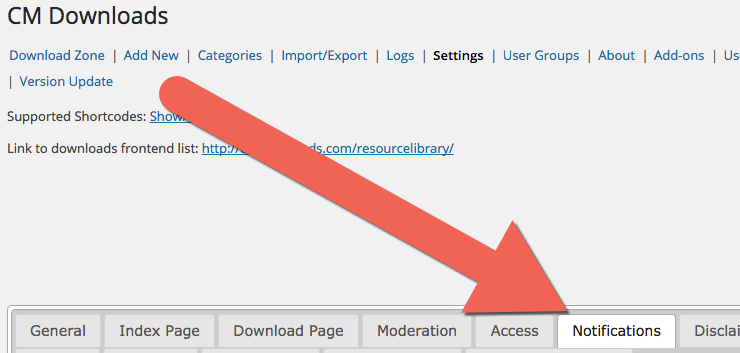
Under the Download section, the admin can create the email template for notifications about new downloads using our supported shortcodes.
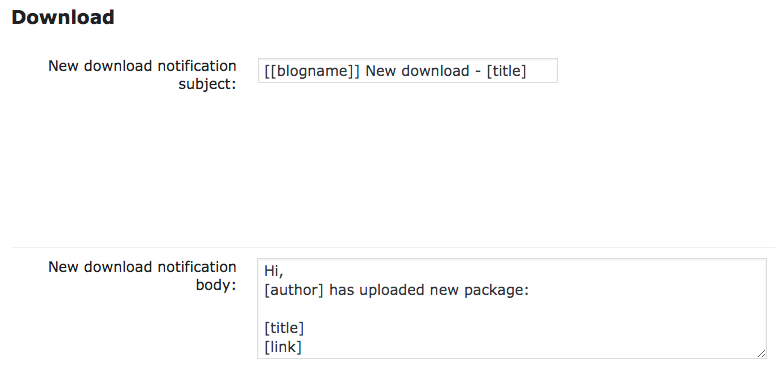
Here are several examples of shortcodes that you can use to customize an email message’s content:
New Download Email Notification Shortcodes:
- [blogname] - name of the blog
- [title] - new download title
- [link] - link to download page
- [author] - uploader name
TIP: Who will Receive New Download Notifications?
Next, the admin can choose who will receive email notifications about new downloads. If the new download has access restricted to chosen groups, chosen users, or the downloads category has restricted access to some groups, then you can notify these users about the new download.
- Choose "Groups' members" if you want to notify the restricted groups members.
- Choose "Users assigned directly" to notify users assigned directly to downloads.

Learn more: Notifications - User Notifications
Translating Interface
If your site is not in English, that's ok. You can translate the Front-End text (also called labels).
Translated Labels Example

Settings
Navigate to the Admin Dashboard → CM Downloads Pro → Settings.
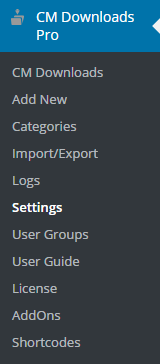
Click on the Labels tab.

In here you can edit all important labels of the plugin, from buttons to headers.
Learn more: Settings - Labels
Improving SEO
The WordPress File Manager Plugin comes with a built-in mechanism for optimizing your website's SEO.
Head to Settings → General → SEO.

You can:
- Enable the rewriting of meta tags. If enabled, WordPress File Manager Plugin will add an extra meta-tag for the purpose of optimizing SEO. If disabled, then all of the following SEO features will also be disabled.q
- Choose the text which appears on the browser's title bar on the Downloads index page. The careful selection of text for the title bar allows for better search engine positioning. If blank, then the default title will be used.
- Add a meta description for the index page, which allows for better search engine positioning.
- Mark non-canonical pages as noindex and to the contributor page. If enabled, the <meta name="robots" content="noindex"> tag will be added to these pages.
Learn more: WordPress File Manager Plugin (CMDM) - Extras - SEO Support - CreativeMinds Products Documentation
Adding a Disclaimer
A download disclaimer is a short text that states the terms and conditions for using your site’s downloads area.
The admin can control the visibility and functionality of their WordPress downloads area disclaimer, and add the text of both the disclaimer itself and the accept/reject buttons.
Settings
Navigate to the General tab and the Disclaimer section in the WordPress File Manager Plugin settings.
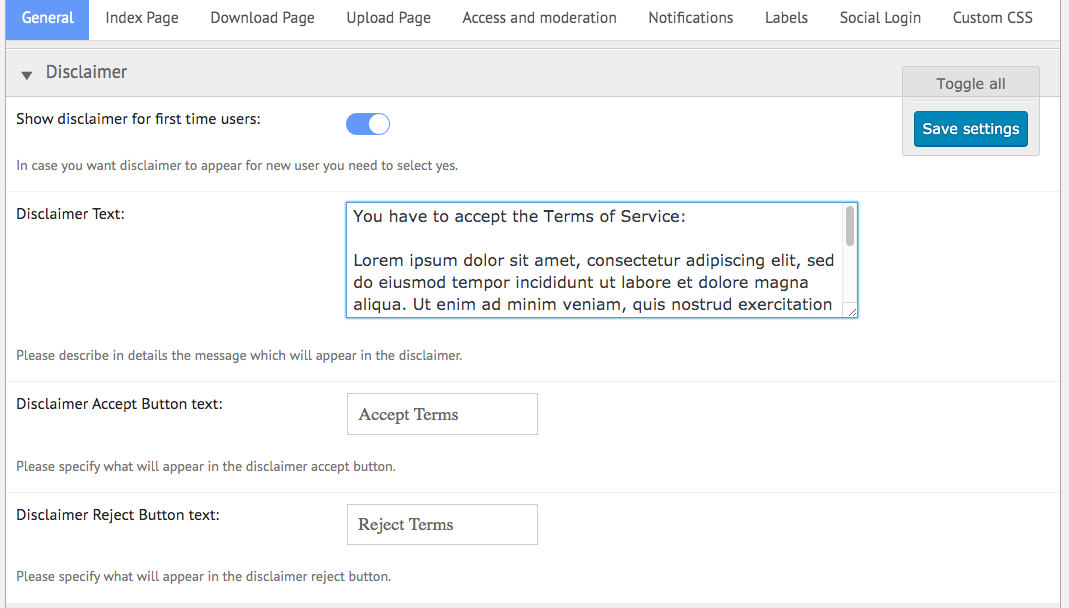
What should I include in my Download disclaimer?
A downloads area disclaimer is a short text that states the terms and conditions for using your site’s download area. Users need to accept your terms before downloading files.
You can include terms of use information, and also additional information about the type of information you provide and collect in your downloads area. It's important to use a clear language to ensure your audience understands all the implications of utilizing your service.
 |
More information about the WordPress File Manager Plugin Other WordPress products can be found at CreativeMinds WordPress Store |
 |
Let us know how we can Improve this Product Documentation Page To open a Support Ticket visit our support center |
